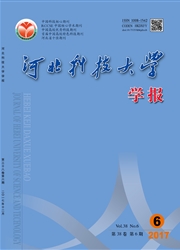

 中文摘要:
中文摘要:
为分析液氮作用下煤的致裂机理,对原煤煤样开展了液氮溶浸实验。利用激光显微镜观测液氮溶浸前后煤样的原生裂隙扩展和新裂隙萌生情况,利用断裂力学理论分析液氮溶浸下煤样原生裂隙的扩展机制。研究结果表明:1)液氮作用引起煤内温度拉应力和应力集中,当应力强度因子超过煤原生裂隙的断裂韧度时,煤样原生微裂隙扩展;2)温度拉应力使得原生裂隙周围强度不大的颗粒团拉破坏、脱落,破坏了煤样的结构,并引起新的微裂隙萌生;3)液氮作用时间对应力强度因子有很大的影响,随着作用时间增加,温度梯度增大,裂隙的应力强度因子增加,煤更易发生断裂。
 英文摘要:
英文摘要:
In order to research fracturing mechanism of coal subjected to liquid nitrogen cooling,submersion tests of liquid nitrogen for natural coal samples are carried out.A laser microscope is employed to observe the extension of native crack and propagation of cracks of coal samples after thermal shock.Then the fracture mechanics theory is used to analyze the extension mechanism of the crack during thermal shock.The main conclusions include:1)Liquid nitrogen cooling causes temperature tensile stress and the stress concentration.When the stress intensity factor is more than the fracture toughness of coal native crack,the native crack will extend.2)The temperature tensile stress makes the particle clusters with low tensile strength around the native crack fail and break off,and the destruction of the structure of the coal sample causes microcrack initiation.3)There is a great effect of cooling time on the stress intensity factor.With the increasing of the temperature gradient and the cooling time,the stress intensity factor increases,with more susceptibility for coal to rupture.
 同期刊论文项目
同期刊论文项目
 同项目期刊论文
同项目期刊论文
 期刊信息
期刊信息
